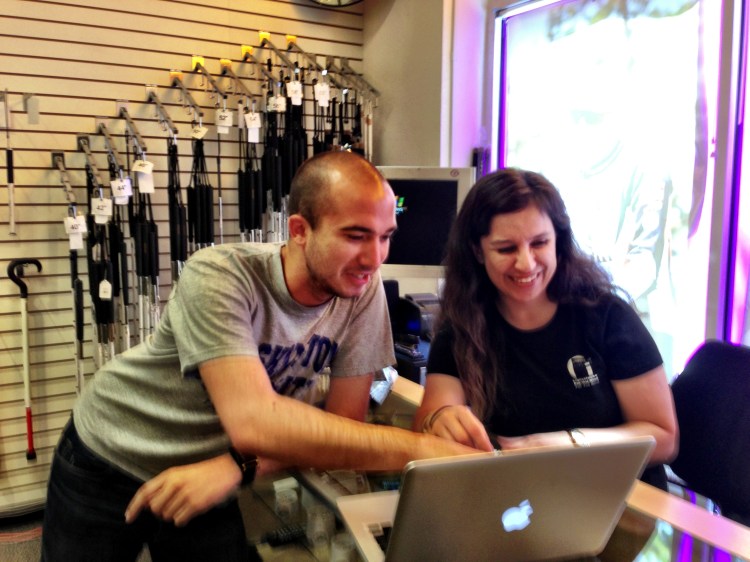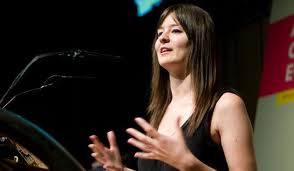Three years ago, my friend Chris Maury, 27, realized he was straining his eyes to read words on a computer screen.
After paying a visit to his doctor, Maury was diagnosed with a rare genetic condition called Stargardt’s Macular Degeneration. Maury was told he would steadily lose his vision. No cure currently exists for Stargardt’s, which affects fewer than one in 10,000 people.
Within a year, Maury decided to quit his job at a fast-growing startup and relocate from San Francisco to Pittsburgh. With his eyesight steadily deteriorating, he made it his mission to build technologies for the visually impaired. Maury’s current project, Conversant Labs, develops iPhone applications for the blind, such as screen readers and accessible keyboards. He is highly involved with an accessibility meetup that supports entrepreneurs with ideas to make Pittsburgh a more disability-friendly city.
Maury is a loyal iOS user and develops exclusively for the iPhone. The majority (an estimated 60 percent) of blind and visually impaired people own Apple devices. That’s because Apple offers an unrivaled accessibility feature called VoiceOver, which can tell you what’s on the screen and walk you through potential actions. Android is steadily improving its offerings for the blind, but it’s too expensive for many disabled people to make the switch.
Maury is planning to keep his iPhone, but he has recently begun to question whether Apple is truly committed to supporting the blind community.
How committed is Apple to the blind?
Some of Maury’s favorite applications — notably, Flux, which changes the resolution and color of a screen to make it easier to read — are not approved by Apple. Maury’s vision is currently less than 20/60, so Flux makes it possible for him to work effectively and communicate with friends and family members.
Why wouldn’t Apple go out of its way to support apps that help people with disabilities?
“Apple needs to be in control and takes a notoriously top-down approach,” says Elizabeth Stark, a Harvard-trained lawyer who has taught at Stanford and Yale on the Internet and cyber-security issues. Stark believes that Apple’s chief concern is controlling the user experience — not helping its visually impaired users.
Apple has not responded to a request for comment.
Maury and Stark have recently become fast friends, and they share an interest in accessibility, user experience, and control. They also follow Internet policy and are critical of the Digital Millennium Copyright Act (DMCA)’s broad and inflexible ban on circumventing digital locks.
“Preventing such usage is clear discrimination and puts the profits of large firms above the needs of a those who stand to gain tremendously from access to life-enabling technologies,” Maury recently wrote in a blog post.
While Google’s Android operating system functions with a more open approach (it’s relatively easy to customize a device), Apple leaves little room for personal innovation. “Apple’s obsession with controlling functionality takes precedence over anything else,” Maury says.
Stark and Maury are now working together on a campaign, which they believe is a temporary solution to this problem. The pair have launched a crowdfunded reward for the first developer who can jailbreak iOS 7. The reward is $10,272 at the time of going to press.
In the long run, the government may need to step in to protect the disabled community, especially if Apple doesn’t revise its policies.
The jailbreak
By jailbreaking the operating system, the accessibility community can download any applications that can help them, regardless of whether they have been given the stamp of approval by Apple.
“If you have a smartphone, you should be able to install what you want on your own device,” says Stark. Jailbreaking a device in the U.S. is legal for smartphones but not for tablets. The U.S. copyright office has repeatedly rejected appeals to extend protections to tablets, as the category of these devices is considered difficult to define.
Jailbreaking is currently legal, but it’s in a precarious spot. In November, a draft of a Trans-Pacific Partnership treaty was leaked, and it appears to proscribe unauthorized jailbreaking.
Maury and a team of experts are simultaneously hoping to shed light on how actions against jailbreaking and the DMCA are hurting the disabled. Stark has recruited some high-profile judges for the jailbreak campaign, including Boing Boing editor Cory Doctorow, who will help review the submissions.
Maury and Stark aren’t the only ones calling for an iOS 7 jailbreak. Over the weekend, a 9to5mac writer said he was able to jailbreak his wife’s iPhone 5s device using instructions that were recently circulated on the Internet.
They say they are keeping an eye on reports like these, which have inspired a race to finish an open source version. One of the requirements to win the prize is that the jailbreak code should be made open source.
Developers should submit their jailbreak to Stark and Maury to get their hands on the prize money. A small portion will be donated to digital advocacy groups The Electronic Frontier Foundation (EFF) and Public Knowledge.



